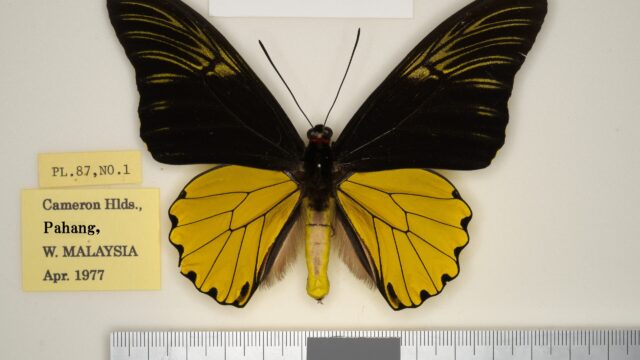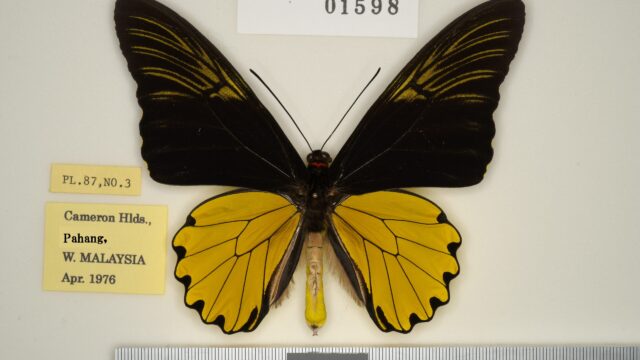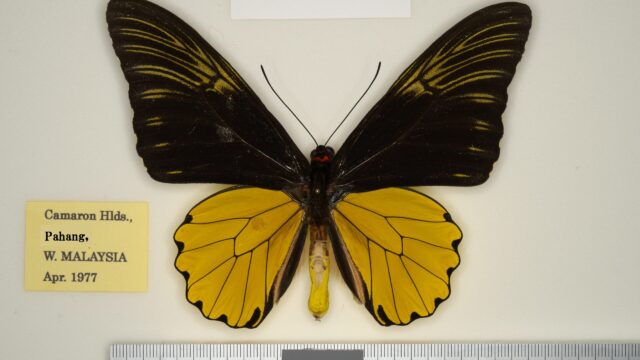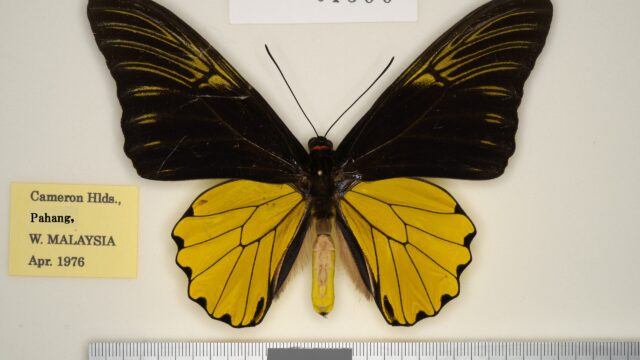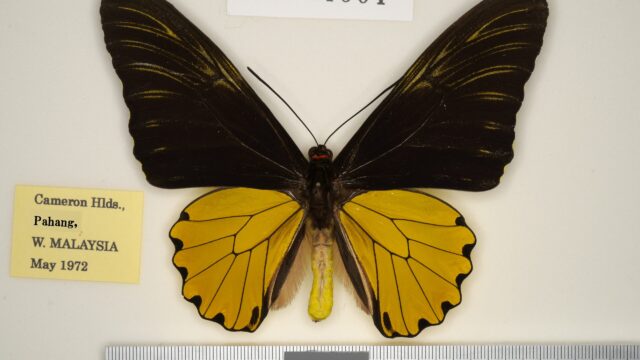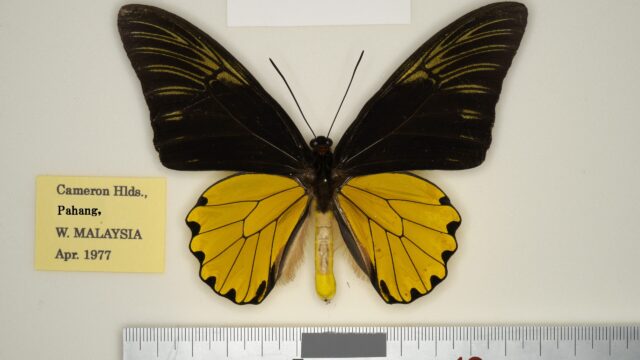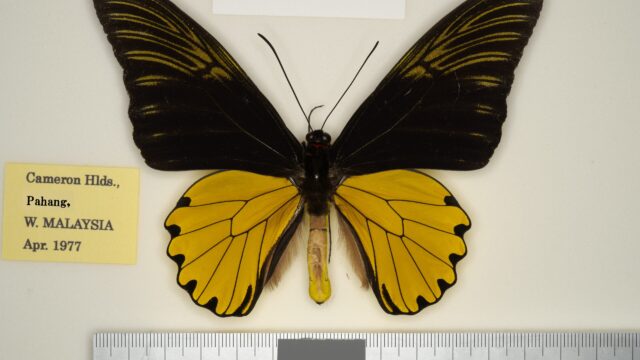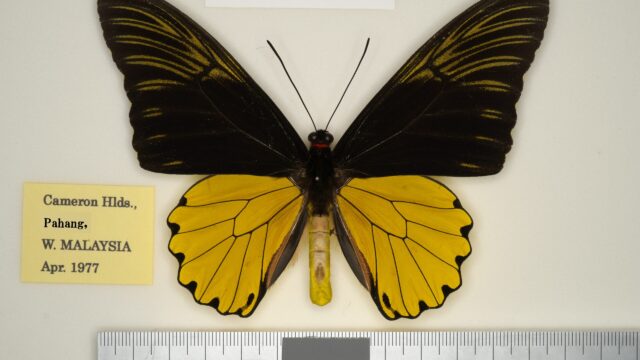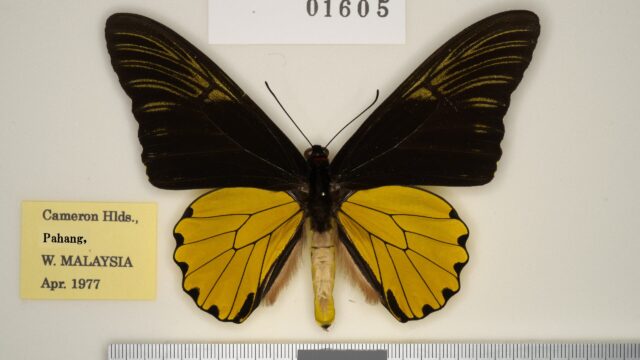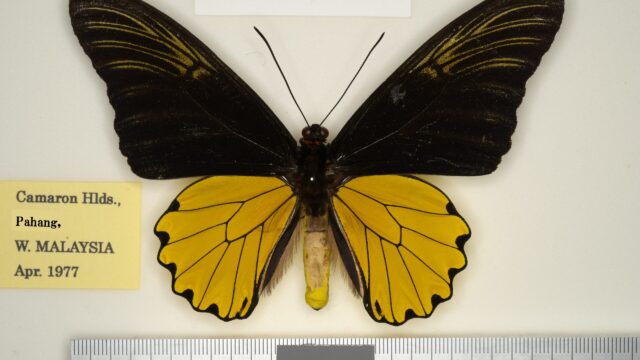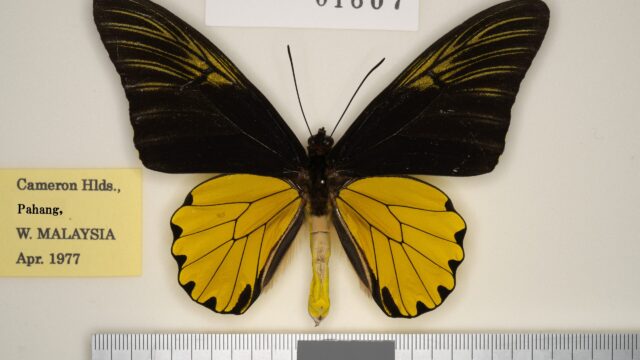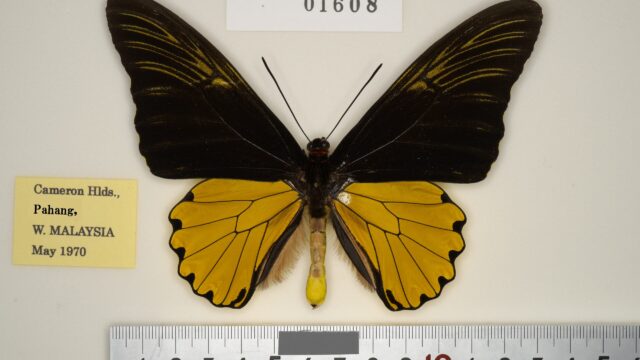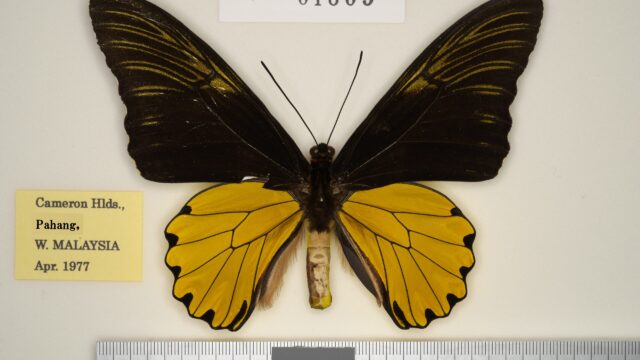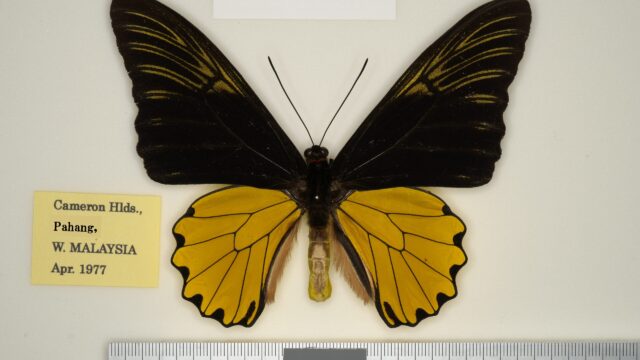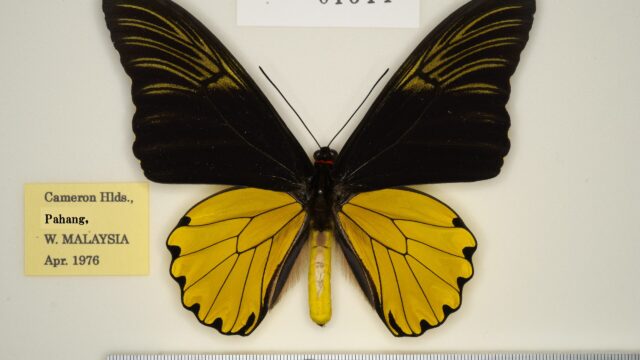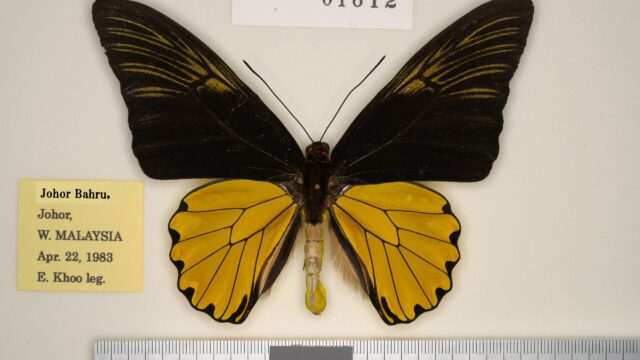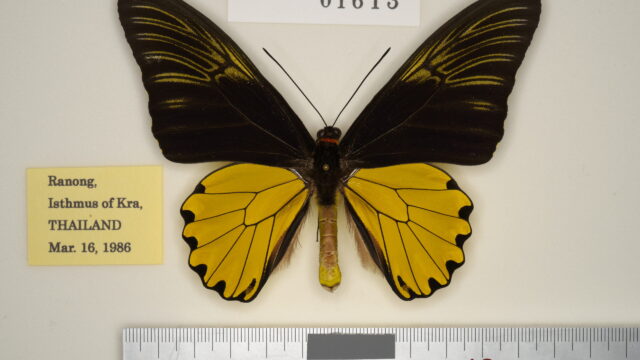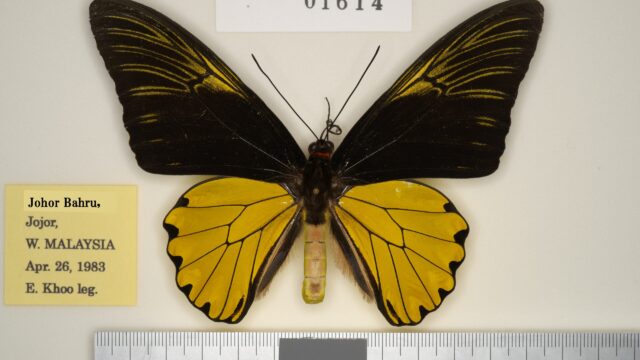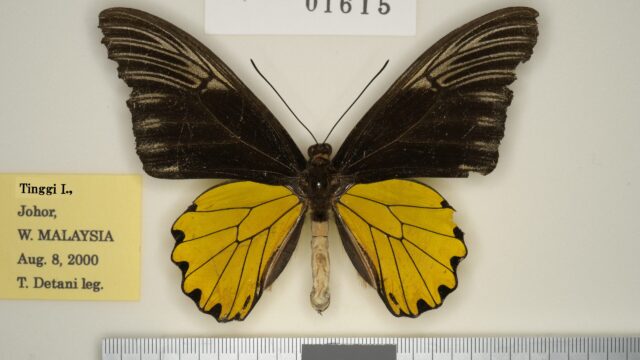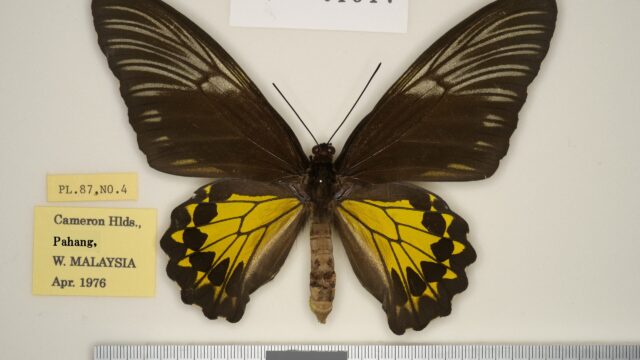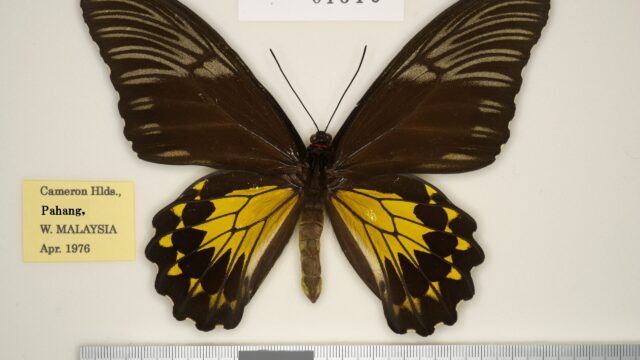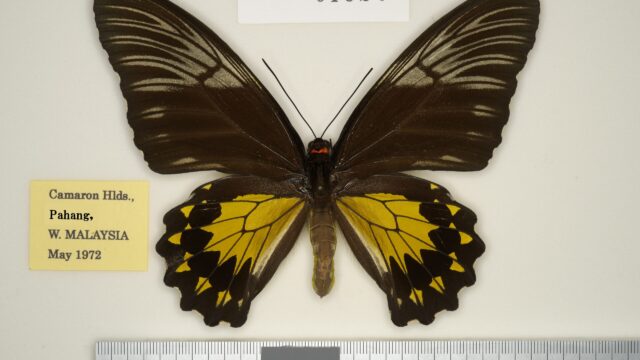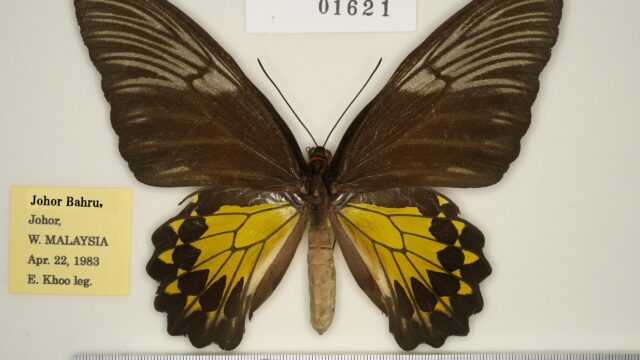- Ssp. ruficollis (Butler, 1877)2) [♂, ♀]
(Distribution) [Map 80]
MYANMAR [Tanintharyi (=Tenasserim)] South Beik (=Mergui) Arch. ; THAILAND [Peninsular] Isthmus of Kra, Ranong (Hot Samphang), Thung Na Kha, Khao Chong, Trang, Thale Ban, Satun, Yala, Than to Waterfalls; W. MALAYSIA [Perlis], [Kedah] Kuala Kedah, [Pinang] Pinang (=Penang) Is., [Perak] Maxwell (=Larut) Hill, Taiping, Beruas, Sungai Batu, Ayer Kuning, Cameron LL., [Kelantan] Kota Bharu, [Terengganu] Terengganu River basin, Kuala Berang, [Pahang] Ulu Piah, Cameron HL., Taman Negara Nat. Park, Fraser’s Hill, Genting HL., [Selangor] Gombak Setia, Ulu Langat, [Negeri Sembilan], [Melaka], [Johor] Tinggi Is., Telok Mahkota (= Jason Bay), Johor Bahru; SINGAPORE.
(Episodes of discovery and original description)
Although Godart (1819) was the first to describe this subspecies, it was Butler (1877) who named it as a species. The description was based on a Malacca specimen in his collection. The original description is simple: “♂. Allied to O. flavicollis: wings smaller, comparatively narrower; outer margin of primaries more distinctly inarched; collar carmine.” The paper also describes a ♀ collected at Batu Kawan, which is in the collection of Distant. The name “ruficollis” means “red neck” and was probably given in contrast to the Bornean subspecies flavicollis, “yellow neck,” which was described four years earlier.
(Characteristics)
Similar to ssp. euthydemus from Sumatra Island, but FW vein-stripes of ♂ are more distinct and yellow. ♀ has smaller dark discal spots on HW.
(Spotted pattern)
♂: Compared to the five subspecies of the above Sumatran series, vein-stripes on FW are bright yellow, but the upper and lower vein-stripes along V4th do not reach the cell. Black marginal border is narrower and black projections are somewhat smaller.
♀: The ground color and the shape of vein-stripes on FW are very reminiscent of ssp. euthydemus, but dark discal spots on HW are often shorter and narrower.
(Variation)
♀-f. poonkuanyaowi Tung, 198236): [Aberrant HW pattern] Dark discal spots are reduced in size and isolated.
♀-f. yapi Haugum & Low, 198315): [Aberrant HW pattern] On the HW, there is an additional row of discal spots, which are distinctly colored a mat pinkish gray to pink color, on both sides of every space, except for subcostal space.
